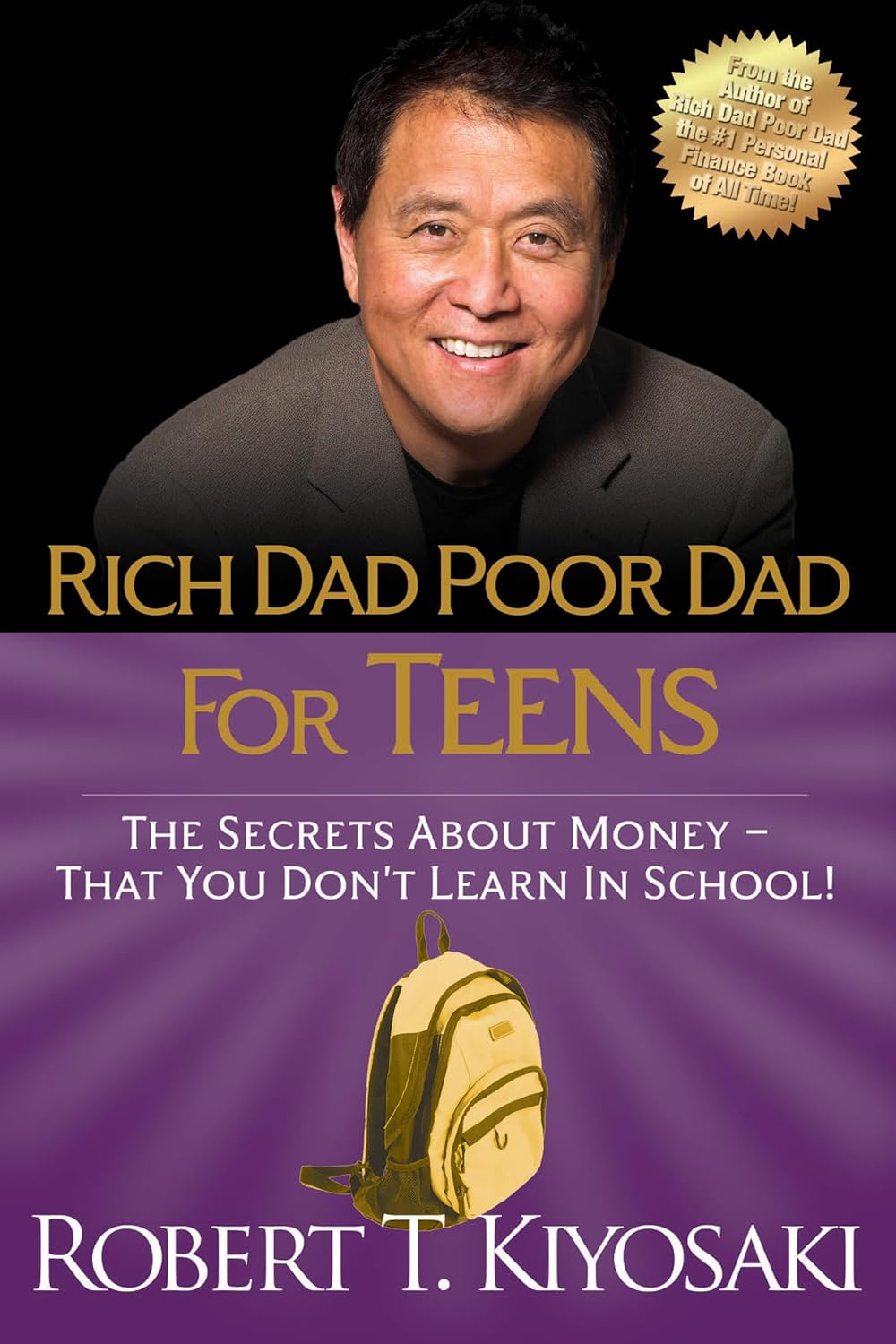I recently finished reading Rich Dad Poor Dad for Teens by Robert Kiyosaki, and I must say, it truly piqued my interest. As someone who continually looks for ways to empower younger generations with financial literacy, I was excited to delve into this book. Knowing that Kiyosaki’s works have been pivotal in transforming conversations around money, I hoped this edition would provide accessible insights for teenagers eager to understand personal finance.
This book is indeed compact, fitting snugly in your pocket, which serves as a practical feature for any young reader on the go. It is also packed with straightforward advice on personal finance that is crafted with young readers in mind. Kiyosaki utilizes real-life stories to explain essential concepts such as assets versus liabilities, passive income, and the entrepreneurial mindset, all framed in a way that feels relatable rather than instructional. Nena Popovic beautifully summarized this in her review, praising the book for breaking down complex finance concepts into easily digestible pieces, urging teens to cultivate a millionaire mindset early on.
One of the major positives I gathered from my reading experience is the encouragement of critical thinking regarding traditional education. Kiyosaki challenges the status quo, prompting young readers to rethink how they perceive school, employment, and the concept of money itself. This approach resonated with me, as it encourages readers to assess their financial beliefs and habits critically. Another highlight was the motivational tone that runs throughout the book; the advice to “work to learn, not to earn” really stuck with me, serving as a great conversation starter for teens contemplating their future career paths.
However, it isn’t without its drawbacks. Some readers have expressed that while the concepts are exciting and motivational, the book leans more towards mindset rather than offering detailed, actionable steps. As noted by various reviewers, this may not adequately prepare teens who are seeking tangible steps to apply what they learn. Additionally, there were interspersed mentions of humor in the writing, which had mixed reviews—some found it engaging, while others felt it came across as patronizing.
I also found echoes of criticism regarding the book’s physicality—certain users were disappointed by its small trim size and lack of depth, feeling it shortchanged the price they paid. For a reader expecting a comprehensive guide, it might feel too thin, and I can understand those sentiments. Still, I believe the book effectively meets its goal of introducing basic financial concepts to teens, making it not entirely unjustified in its compact form.
In terms of readability, I found the language did cater well for its target audience of ages 12 to 17. The informal style balances the motivational with the instructive, allowing for smoother reading sessions. The quizzes and sidebars scattered throughout further engage the reader, prompting them to reflect directly on their thoughts and experiences concerning money. Despite the concerns about its brevity, these interactive elements do foster a participatory learning experience, something that could prove valuable in retaining knowledge.
Ultimately, I would recommend Rich Dad Poor Dad for Teens as a great starting point for any teen interested in personal finance. While it may not cover every aspect to the level some readers desire, the fundamental lessons it imparts spur discussions about money and success that are crucial for young adults today. So if you know a teenager striving for financial independence or simply looking to navigate their future thoughtfully, this book might just be the right gift.
In conclusion, Kiyosaki has created a resource that blends inspiration with education, and despite a few caveats concerning the depth and humor, it serves its purpose well as a first step toward financial literacy. I give it a solid 4.5 out of 5 stars for its meaningful content and engaging approach.








